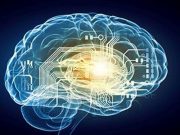Tag: Eating / Appetite Disorders
USPSTF: Evidence Lacking for Screening for Eating Disorders
Evidence insufficient to support a recommendation for or against screening adults, teens for eating disorders
Care for Eating Disorders Up During Pandemic
No similar increase in inpatient or outpatient care seen for three comparator behavioral health conditions
USPSTF: Evidence Lacking for Screening for Eating Disorders
Evidence insufficient to evaluate the benefits and harms of screening for eating disorders in adolescents and adults
Body Dissatisfaction in Youth Not Tied to Socioeconomic Status
Findings seen in longitudinal study of U.S. teens of diverse backgrounds recruited from schools in the Minneapolis-St. Paul, Minnesota area
Restrictive Eating Disorders Up Among Teens During Pandemic
For first 12 months of pandemic, number of admissions at children's hospital more than double for same period in previous three years
Link Found for Weight-, Shape-Related Bullying, Eating Disorder Behaviors
Frequency of bullying positively linked to purging, muscularity-oriented behavior, but not dietary restriction, binge eating
Behavioral, Biological Links Studied in Eating Disorders
Functional brain imaging used to assess brain reward response and ventral striatal-hypothalamic circuitry in young women with eating disorders
Weight Control Product Use in Adolescence Ups Risk for Later Eating Disorder
Findings seen among teens followed for 10 years into early adulthood
Screen Time Tied to Binge Eating in Preteens
Findings based on screen time use at age 9 to 10 years and subsequent eating habits one year later
Costs of Eating Disorders Quantified for the United States
Total economic costs estimated at $64.7 billion for fiscal year 2018 to 2019; reduction in well-being costs estimated at $326.5 billion














